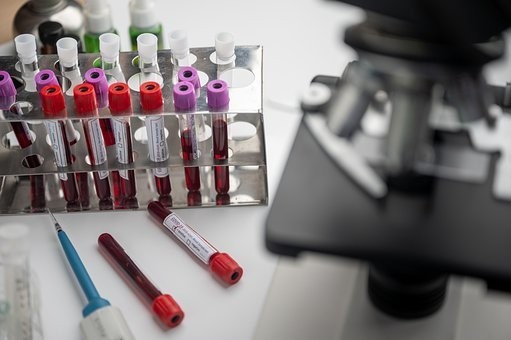Jan 5
2022
Healthcare Trends: How Will Patient Care Improve In The Future?
 Moving from inventing the first wheel ever to discovering the use of Artificial intelligence, we have come a long way. The world is changing for the better, and technological advancement has impacted numerous industries. And the healthcare industry is no exception.
Moving from inventing the first wheel ever to discovering the use of Artificial intelligence, we have come a long way. The world is changing for the better, and technological advancement has impacted numerous industries. And the healthcare industry is no exception.
The pandemic has highlighted several gaps in the accessibility of services to patients. Healthcare facilities have had to question old operating methods and adapt to better solutions for providing patients with better care. Moving into 2022, we can observe certain advancements in this sector. These are predictive of what improvements are likely to occur in the future. Listed below are some health-tech trends that are likely to impact the quality of care patients receive profoundly.
Better predictive analytics
The role of data is becoming prominent in improving healthcare services. Data helps identify trends in population health, thereby also helping to identify people at higher risk of developing specific medical issues. Such analysis includes gathering data from hospitals, specialists, primary care providers, and pharmacies. The information will help close gaps in providing patients with proper treatment on time. It will also help healthcare facilities manage a shortfall of resources during emergencies such as a pandemic.
Predictive analytics are likely to become more accurate and efficient in the future with more innovative data collection tools. It will help improve healthcare systems engineering, leading to better management and delivery of high-quality patient care.
Telehealth will become more common
In the past, access to healthcare depended on whether a patient could make it to a hospital or not. However, as communication and collaboration between different geographical locations increases, healthcare services will also expand. Telehealth is not a new idea, but it will gain popularity in the coming years. Doctors and nurse practitioners will be able to counsel patients over apps such as Zoom and other dedicated health portals.
Moreover, at-home testing kits will become more accessible, enabling patients to maintain privacy. According to the American Hospital Association, most healthcare services will be delivered at home or virtually by 2040. It will make healthcare much more accessible to people, especially those who live in remote areas.
- Artificial intelligence in healthcare
AI will revolutionize a lot of medical procedures. It has already helped identify to modify treatment for the Ebola virus. Similarly, Google DeepMind has created an AI program for analyzing breast cancer. Interestingly, this algorithm was 11.5% better at identifying breast cancer than human radiologists. Some current applications of AI in healthcare include
- AI-assisted surgery
- Monitoring patient vitals through wearables
- Making smartphones into powerful diagnostic tools
- Creating more precise analytics for pathology images
- Reducing the dependency on EHRs
With the apparent benefits of AI, its use is likely to increase tremendously to improve eh quality of care patients receive.
Precision medicine will replace the one-size-fits-all approach
Precision medicine involves considering patients’ specific lifestyles and environments in designing unique treatment plans for each one. While traditional treatment often outlines a general procedure typically applied to all patients suffering the same ailment, precision medication is more personalized. It is now being used increasingly, especially in healthcare and pharmacological research. For instance, oncologists use precision methods to identify a patient’s tumor cells’ genetic makeup in oncology. They then suggest a treatment plan that is likely to be most effective for that patient.
Methods of precision medication make treatment success much more likely since no two patients are the same. Also, each patient receives more undivided attention during the caregiving process.
Virtual and Augmented reality
VR technology lets users experience a 3D view with VR headsets. This innovative method is an excellent way to train future surgeons without performing risky procedures on patients. Patients can also be shown soothing landscapes to minimize discomfort. Psychiatrists also use VR to help PTSD patients overcome their trauma by recreating similar simulations through VR devices. VR interventions in medical training and patient care will become more common in the future.
On the other hand, AR is a way to enhance the physical world by introducing digital elements of sound, vision, or other such sensory stimuli. This has allowed healthcare providers to impart knowledge to patients about complicated medical processes more efficiently. AR is also a helpful way of planning surgeries and outlining patient treatments more effectively. Research indicates that AR is being used increasingly in medicine, and its use is likely to continue increasing.
Conclusion
Following the pandemic, the marriage of technology and healthcare has become more evident. Innovative processes and better healthcare management through data-driven decision-making are likely to improve patient care in the future. These improvements will positively impact the overall well-being of people and the community.